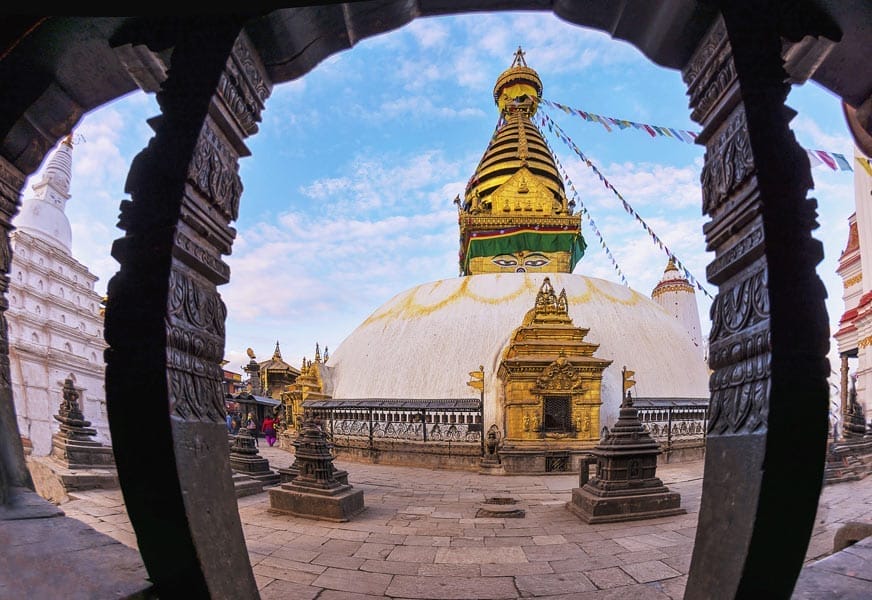Gokyo Lakes Trek A Scenic Alternative to Everest Base Camp
Many trekkers consider the Gokyo Lakes Trek one of the most scenic routes in the Everest region. Unlike the classic Everest Base Camp trail, this route offers a peaceful alternative without the need to reach the base camp or cross high-altitude passes. The Gokyo Ri hike is ideal for those who want to experience breathtaking Himalayan views with less physical strain.
Gokyo Lakes The Highest Freshwater Lakes in the World
The Gokyo Valley is home to six stunning glacial lakes, situated between 4,700 and 5,000 meters. These pristine turquoise waters form the highest freshwater lake system in the world. The Gokyo Lakes are not only visually striking but also hold cultural significance. They are considered sacred by both Hindus and Buddhists and have been recognized as wetlands of international importance.
Gokyo Ri (5,357m) A Viewpoint Like No Other
Gokyo Ri, also known as Gokyo Peak, is a 5,357-meter summit on the western side of the Ngozumpa Glacier, the longest glacier in Nepal. Reaching the top of Gokyo Ri rewards you with panoramic views of some of the tallest peaks in the world, including Mount Everest, Lhotse, Makalu, and Cho Oyu. Additionally, dramatic vistas of Ama Dablam and Thamserku will leave you in awe.
Namche Bazaar Gateway to Everest
The trek to Namche Bazaar, the largest Sherpa settlement in Nepal, follows the same route as the Everest Base Camp trek in its early stages. This bustling mountain town offers a rich cultural experience and serves as a key acclimatization stop. From here, the trail diverges toward quieter villages like Phortse Tenga, Dole, and Machhermo, leading eventually to Gokyo.
Trekking Through Sagarmatha National Park
As you move higher, the trail passes through Sagarmatha National Park, a UNESCO World Heritage Site. Known for its rare wildlife, alpine forests, and dramatic landscapes, the park is also home to iconic peaks and a deeply rooted Sherpa culture. Trekkers often spot Himalayan tahr, musk deer, and various bird species along the way.
Machhermo A Tranquil Stop
The village of Machhermo, located at 4,465 meters, lies at the base of a steep hill that protects it from the cold northern winds. To the west, you’ll see a dramatic rocky amphitheater that adds to the village’s isolated beauty. It’s a perfect place to rest, acclimatize, and soak in the mountain atmosphere.
Gokyo Ri and the Lakes – An Unforgettable Experience
The final stretch to Gokyo Lakes is less crowded, offering an authentic look at mountain village life. Along the way, the massive Ngozumpa Glacier stretches beside you, creating a landscape of ice rivers, glacial debris, and turquoise waters. Once you reach Gokyo, take time to ascend Gokyo Ri for a stunning sunrise or sunset view.
If time allows, spend an extra day exploring the 5th and 6th Gokyo Lakes, located in a remote alpine bowl beneath Cho Oyu. These higher lakes offer unmatched solitude and scenery.
Optional Route via Cho La Pass
For those seeking more adventure, an alternative route from the southern tip of the glacier leads over Cho La Pass, eventually linking back to the Everest Base Camp trail. This adds a more challenging but rewarding extension to your journey.
The Return Journey
The trek usually concludes at Gokyo Ri, after which most trekkers retrace their steps back to Namche Bazaar. There, over a cup of steaming coffee, stories are shared and memories relived. Each stop on this trail has its own charm, making the Gokyo Lakes Trek a uniquely peaceful and awe-inspiring Himalayan adventure.





